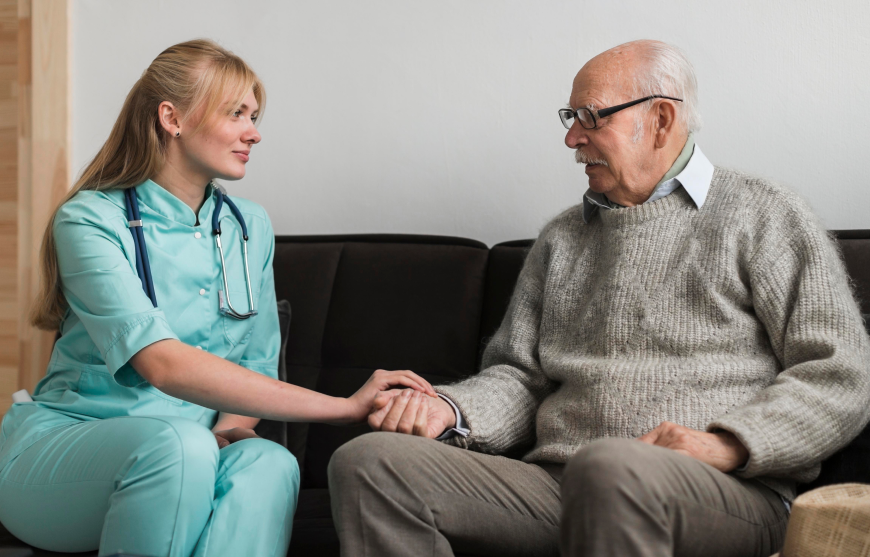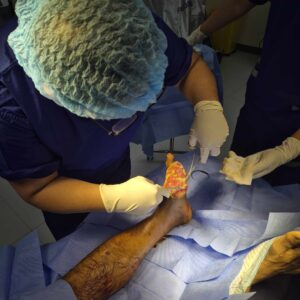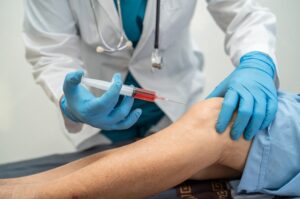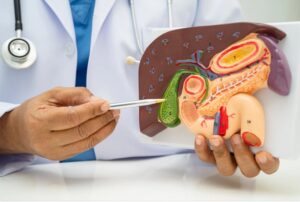Understanding Stroke and Its Growing Impact in the UK
Stroke is one of the leading causes of death and disability in the United Kingdom, affecting thousands of lives every year. It occurs when blood flow to part of the brain is interrupted, leading to potential damage to brain cells and long-term complications. There are two main types of stroke: ischemic, caused by a blood clot blocking an artery, and hemorrhagic, resulting from a burst blood vessel in the brain. According to the Stroke Association, over 100,000 strokes happen annually in the UK, making it a major public health issue. Common risk factors include high blood pressure, smoking, diabetes, obesity, and an inactive lifestyle. These risks are especially prominent in aging populations and individuals with poor cardiovascular health. Beyond physical impact, stroke deeply affects families, caregivers, and the healthcare system, emphasizing the urgent need for accessible and effective Stroke Care UK services.
The Current State of Stroke Care in the UK
The UK has made significant strides in improving the speed and quality of stroke response through the National Health Service (NHS) and its specialized pathways. Hyper-acute stroke units (HASUs) are central to this effort, providing immediate access to diagnostics and emergency treatments. HASUs ensure that patients receive rapid interventions such as thrombolysis within the critical “golden hour” after symptoms appear. The NHS has also enhanced its emergency response systems, ensuring ambulances are trained to identify stroke symptoms quickly and direct patients to the right facility. Advanced diagnostic imaging, including CT scans and MRI technology, has become more efficient thanks to AI-assisted triage tools that detect early signs of brain damage. Continuous improvements in stroke pathways have reduced mortality rates and improved recovery outcomes across the UK. However, disparities still exist in access and quality of care, particularly between urban and rural regions.
Modern Stroke Treatments and Rehabilitation Approaches
Treatment for stroke has evolved rapidly in recent years, focusing on both acute care and long-term rehabilitation. In hospitals, thrombolytic drugs are administered to dissolve clots in ischemic strokes, while mechanical thrombectomy procedures physically remove clots from the brain. Hemorrhagic stroke care often involves surgical procedures to stop bleeding and relieve pressure on the brain. Once the patient’s condition stabilizes, rehabilitation begins as a crucial phase in the recovery journey. Rehabilitation programs combine physical, occupational, and speech therapies tailored to each patient’s needs.
Some of the most effective rehabilitation tools and strategies include:
- Physiotherapy: Restoring muscle strength, mobility, and balance
- Speech and language therapy: Helping patients regain communication abilities
- Occupational therapy: Encouraging independence in daily activities
- Robotics and virtual reality therapy: Providing engaging and measurable progress
- Tele-rehabilitation: Enabling patients to continue recovery from home
These innovations highlight the commitment of Stroke Care UK to providing patient-centered, technology-driven care.
The Role of Multidisciplinary Teams in Stroke Recovery
Stroke recovery is rarely a solo effort. It requires collaboration between various specialists working toward one goal: restoring quality of life. In the UK, multidisciplinary stroke teams typically include neurologists, nurses, physiotherapists, occupational therapists, speech pathologists, psychologists, and social workers. This integrated approach ensures that patients receive comprehensive care that addresses physical, cognitive, and emotional needs. Psychological and emotional recovery is often as vital as physical rehabilitation, especially for patients coping with depression or anxiety following a stroke. Families also play a key role in supporting recovery, and caregivers receive education on how to assist with exercises and daily routines. The NHS continues to provide ongoing professional development for stroke specialists, ensuring that care teams stay updated with modern research and best practices. A well-coordinated team structure significantly improves patient outcomes, minimizing hospital readmissions and enhancing independence.
Access to Stroke Care Services Across the UK
Access to stroke care services can vary significantly depending on location. England, Scotland, Wales, and Northern Ireland each have unique healthcare strategies for stroke management, though all follow national clinical guidelines. Urban centers tend to have better-equipped hospitals with immediate access to HASUs, while rural areas may face delays due to limited resources. The NHS and local governments are actively addressing these inequalities through telemedicine, allowing patients in remote areas to access consultations and follow-ups via digital platforms. Charities such as the Stroke Association and Chest Heart & Stroke Scotland also play vital roles in supporting recovery programs and advocating for equitable care.
Efforts to improve access include:
- Expanding stroke unit networks across the UK
- Increasing ambulance training for rapid stroke response
- Investing in remote monitoring tools for patients in recovery
- Supporting family caregivers through educational programs
These collective actions aim to ensure that everyone in the UK, regardless of location, can benefit from the best possible Stroke Care UK resources.
Preventing Stroke Through Public Awareness and Lifestyle Changes
Prevention remains one of the most powerful tools against stroke. Public awareness campaigns across the UK emphasize recognizing stroke symptoms early using the FAST test — Face, Arms, Speech, Time — a quick method to detect potential warning signs. Prevention strategies promoted by NHS and public health bodies encourage people to adopt heart-healthy lifestyles that include balanced nutrition, regular exercise, and smoking cessation. Managing underlying conditions such as high blood pressure, high cholesterol, and diabetes greatly reduces stroke risk.
Key lifestyle changes that support stroke prevention include:
- Reducing salt and saturated fat intake
- Engaging in at least 150 minutes of physical activity weekly
- Maintaining a healthy weight
- Monitoring blood pressure and cholesterol levels
- Limiting alcohol consumption
By spreading awareness and promoting lifestyle improvement, Stroke Care UK initiatives help reduce stroke incidence and foster a healthier population.
Stroke Research and Future Innovations in the UK
The UK is at the forefront of stroke research, with leading universities and medical institutions dedicated to advancing care and recovery outcomes. Ongoing studies focus on brain plasticity, regenerative medicine, and artificial intelligence diagnostics. Projects funded by the Stroke Association and the National Institute for Health and Care Research (NIHR) explore how stem cell therapy and neurostimulation can aid recovery after severe strokes. The growing role of AI and predictive analytics enables doctors to identify high-risk patients before a stroke occurs. Personalized medicine is another emerging field, aiming to tailor treatments based on genetic and biological factors unique to each patient. Future Stroke Care UK advancements will likely focus on integrating technology and data-driven insights to enhance early detection, rehabilitation, and prevention strategies.
Support Networks and Resources for Stroke Survivors
Life after stroke can be challenging, but the UK offers extensive support networks to guide survivors through recovery. Organizations like the Stroke Association, Different Strokes, and NHS community programs provide essential resources ranging from therapy access to emotional counseling. Financial and disability support programs also help families adapt to new living conditions and manage expenses during long-term recovery.
Survivors can benefit from:
- Local and online support groups
- Specialized exercise classes for stroke recovery
- Professional counseling services
- Information hotlines for caregivers
These networks play a crucial role in promoting resilience, social reintegration, and mental well-being. Support communities remind survivors that recovery is possible and that they are not alone on their journey through Stroke Care UK services.
Frequently Asked Questions About Stroke Care in the UK
Q1: How quickly should someone receive treatment after a stroke in the UK?
Immediate treatment is crucial. Ideally, patients should reach a hospital within the first hour of symptom onset for the best outcomes.
Q2: What are the main rehabilitation options available through the NHS?
The NHS provides physiotherapy, occupational therapy, speech therapy, and psychological counseling as part of a comprehensive rehabilitation program.
Q3: Are private stroke care services available in the UK?
Yes, private healthcare providers offer specialized stroke treatments and faster access to rehabilitation, complementing NHS services.
Q4: What lifestyle changes can reduce stroke risk long-term?
Maintaining a balanced diet, regular exercise, controlling blood pressure, and avoiding smoking and excessive alcohol are key preventive measures.
Q5: How can families best support a loved one recovering from stroke?
Families can help by assisting with daily activities, attending therapy sessions, encouraging positive motivation, and connecting with support organizations.
Takeaway
Stroke care in the UK continues to evolve with a focus on rapid response, effective treatment, and long-term rehabilitation. Through modern technologies, multidisciplinary teamwork, and strong community support, Stroke Care UK is paving the way for better recovery outcomes and improved quality of life for survivors. Awareness, prevention, and innovation remain essential pillars in reducing the burden of stroke and ensuring every patient receives the care and hope they deserve.






